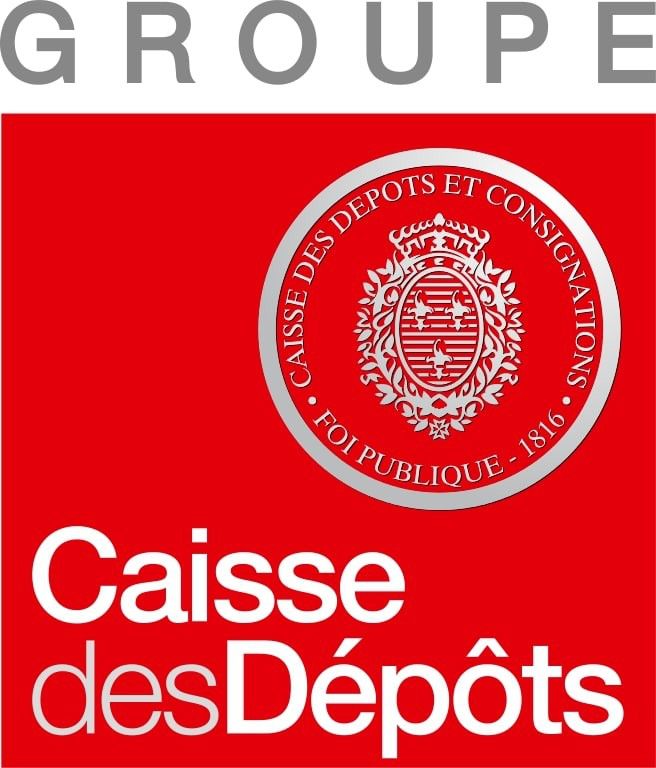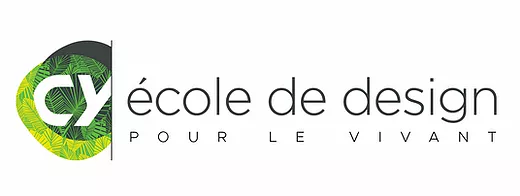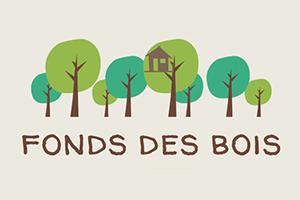Article de Kevin Walker, publié dans la revue « Educational Technology magazine »
Publié : Article Iri |
Article de Kevin Walker, publié dans la revue « Educational Technology magazine », Nov/Dec 2009
Centre Pompidou, with its radical inside-out architecture, has revolutionized the museum world with its core idea to popularize the elite culture of the art world, opening it up to the very heart of Paris. Twenty years after it opened, I was fortunate enough to help harness technology to stir up another revolution.
Across from the Pompidou, in a nondescript apartment building, Vincent Puig leads a team in conducting experiments at the intersection of art and technology, as part of the Centre’s Institute for Research & Innovation (IRI). When I first met him in 2007, he was cooking up a way to give museum visitors a voice in the exhibition and interpretation of art – a way which transcended the banalities of mere ‘user-generated content,’ aiming for a more informed, intellectual discourse.
He and his team were preparing for an exhibition of two filmmakers at the Pompidou, and had developed an innovative web-based software called Lignes de temps (Timelines). It enabled a web site visitor to interrogate, remix and comment on the films, creating a personalized ‘signed reading’ of them.
But not just any visitor, for what differentiates the Pompidou’s approach from that of other museums is that it aims for more informed critique from amateurs who have some interest in, and experience with, the topic, medium, and/or artist under consideration. In other words, they are going for quality over quantity.
« Museums today are considered like any regular cultural industry, » says Puig. « And what the culture industry is looking for is audience. ‘Audience’ is quantitative, so you have to have more people, whatever the means, » he laughs.
« But when you look at the quality of the relationship with the art or the culture, and when you look at the way people can express themselves — what we call in our philosophy ‘individuation’ — this process is quite neglected by museums, which prefer to bet on audience and quantitative results. A lot of museums do not understand the issues, which are actually social and political. »
The idea of going for a higher standard of contribution came in part from the thoughts and writings of Bernard Stiegler, director of the Institute. He envisioned a new kind of participation of the public, what he termed « amateurs’ contributions. » The idea was supported by the president of Centre Pompidou at the time, and the IRI was created in April 2006.
« It means more participation in the process of judging and commenting and criticising the art, and the culture in general, » explains Puig. « It also means using technology as a focus for our attention, and of our interaction with the world. For Bernard, technology is really the key extension of the body. So it’s important to use technology as much as possible in a loop of active perception between reception and contribution, or between reading and writing for instance.
« For text these tools are already in place, » he continues, « like taking notes in the margins, or underlining or highlighting something in a text. It’s already common practice. When you talk about temporal media, it’s more difficult to design and have a vision about what can be done on this type of content.
« But also we are interested in time as a general concept. For instance how much time people spend in the museum, how their time crosses the time of other visitors, and the time of the exhibition itself. Because of course the curator has a vision of the typical time neessary for a visit. That’s why we were interested in developing Lignes de temps, because it was a way to make a convergence between the time of the visit and the time of the films — especially in the context of the cinema exhibition. »
That’s where I come in. I developed a way for engaged amateurs to contribute to the discourse of an exhibition while they were in it, using their own mobile phones. We used a free, open-source telephony system called Asterisk to make something akin to a voicemail system for exhibits. It was termed the vocal server, and it interfaced directly with Lignes de Temps.
« The mobile allowed for the first time to have this confrontation of times, » Puig explains. « Because with the mobile you have the capability to measure your time of visit, getting some ‘markers’ of the visit, but also the possibility to extend the markers of the films into the exhibition. »
The result is what Puig calls a « Web 3.0 convergence » combining bottom-up social innovation with top-down commentary of curators and experts, using semantic technologies within Lignes de Temps. The longer-term goal is to produce a personalized visit, which can then be published or podcast. He calls this process ‘collective individuation’ or ‘transindividuation’ — a kind of collective intelligence through a dialectic process.
And it is not limited to cinema. The system was most recently tested for six months in an exhibition at the Pompidou called Traces du sacré, appropriately enough, for ‘the sacred’ of high art culture was what the Pompidou sought to overturn, being rooted in the 1968 political upheavals; and ‘traces’ are what visitors can leave in the museum, thanks to the new technology.
One of the curators, Jean de Loisy, anticipated some controversy related to the topic of the exhibition, and six artists, critics and intellectuals were invited to express “counterpoints.”
In the exhibition, visitors could leave traces using their own mobile phones, or using specially modified audio guides. Puig and his team found that simply adding voice recording ability radically changed the way audio guides are perceived. « Leaving traces or comments during the visit is positively perceived as much more participative than previous receive-only devices » they reported, « and allow a better memorization of the pieces. »*
The trial was a learning experience not just for visitors, but also for Puig and his team. « We learned a lot about simplifying the interaction using mobiles and combining mobile contribution with temporal annotation like Lignes de Temps, » he says. « We learned a lot about the usage of people, and the behavior of different typologies of public. »
They got a closer look at visitors who called themselves amateurs and those who did not. Amateurs tended to do things like make notes and drawings, read the exhibition catalogue, and visit with other amateurs, even visiting a single exhibition several times. They usually did not ask for an audio guide. « The amateur is really a kind of social animal, » explains Puig, « very often visiting the place with friends, already exchanging and discussing things with friends, family, or schools. It’s a characteristic of the amateur that is very much linked to social interaction. »
Self-declared non-amateurs tended to look more for an emotional, interactive or tactile experience with art, and were more likely to use educational and interpretive materials. They remembered the exhibition with more traditional means like taking photos or buying postcards; and were more likely to use audio guides. For them, recording audio comments on a device is seen as an unusual practice — but, the team reported, « the ambiguous status of the mobile phone can help overcome the issue. »*
« It was very interesting to see the differences between amateurs and regular visitors, » Puig reflects. « We had suggestions to not only develop this type of technology, but also to develop a space for contributions, like ‘talking rooms,’ a place where you can really speak into the devices, whether phones, interactive kiosks, audio guides, whatever. The mobility is useful, but sometimes it’s not a panacea; it’s not the only way to get more contributions. Because sometimes people like to rest — they like to sit somewhere, and to speak into something simpler like microphone or PC. So we learned to articulate the mobile more with other devices.
« Also we learned that we should let visitors visualize immediately what has been contributed by others. We had to wait for delays between contribution and publication, because of moderation, because of the editing work that we were asking people to do. You can’t ask people to contribute perfectly in the first shot — you have to get them some feedback if you want them to play the game.
« So all the reactions and contributions were reactions to the exhibition, but not to the other visitors. Which is too bad, because if you want a real discussion, you have to be able to react to other critics and artists and other people.
« We also found that sometimes we were trying to provoke a discussion, a controversy about the exhibition. Probably we were too ambitious on this level. What we tried to provoke was related to an intellectual concept or aesthetic issues, and there was little place for basic discussion about the artists or the pieces themselves. We were trying to escape from the basic comment — ‘I like,’ ‘I don’t like.’ But probably we could find a middle ground between too much conceptualized discussion, and too much direct emotional reaction. There is a lot of space between these two extremes. »
So the team will continue working on the personalized visit on the one hand, and social discourse around an exhibition on the other. Central to both of these is the philosophical idea of linking theory and practice, with the technology helping to make mere visitors into critics for example. This idea is rooted in the writings of Kant and Goethe. Experiments with new technologies and with different types of visitors help to inform and develop the theory in turn.
« We started with these basic principles and thoughts and visions, » says Puig, « and actually we continue to feed this theoretical process. We are able to work with people trying to imagine the future — our future — with nanotechnology for instance, or synthetic biology. We have seminars on pathologies, addictions related to the media, and on new forms of media. IRI is always a combination of this, and the theoretical point of view is inspiring for everything we develop further on. »
* Puig, V., Y-M L’Hour, Y-M Haussonne, and C. Jauniau. Collaborative Annotation System Using Vocal Comments Recorded on Mobile Phones and Audio Guides: The Centre Pompidou Exhibition Traces Du Sacré. Museums and the Web 2009. (http://www.archimuse.com/mw2009/papers/puig/puig.html)

 in english
in english en français
en français











